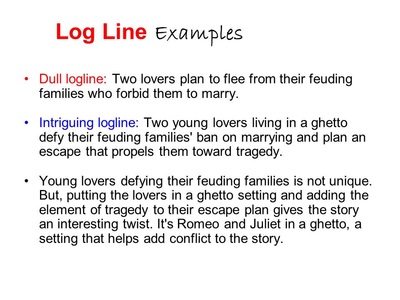

It will ensure that every page of your script advances the plot, story and character. It helps you create a clear path from beginning to end of your script. But it will be worth it.Ĭrafting a plotline is how you check your work in the early stages of developing your idea. It will take time to hone your ideas to only what is essential and to find the most specific and accurate phrases and words. Like a logline, the goal of the plotline is to communicate the beginning, middle and end of your plot in terms that are clear and simple. Is the protagonist intriguing? Does he or she have a strong enough motivation? Do the protagonist and antagonist have a powerful unity of opposites? Do the major plot points build to an exciting climax? Does the change at the end of the story feel earned? The goal of the plotline is to articulate your plot in a clear and concise manner so that you, the writer, can determine whether or not the structure of your script is consistent and compelling. In other words, a logline is designed for your audience the plotline is designed for you, the writer. Where a logline is designed to illicit interest in the commerciality of your script, the plotline is constructed to convey the entire concept of your story. In succinct and pithy terms it will define the main character, major plot points, the antagonist and the change that happens over the course of your story. It will explain the beginning, middle and end of your story.

Where a logline expresses the core concept of your script, a good plotline will go far beyond that. It’s not pretty, no one really appreciates it but it is essential because it’s where the work gets done. If a logline is Cinderella at the ball, your plotline is Cinderella at home scrubbing floors. In order to craft your idea and develop it into a compelling screenplay, you need to be able to define your character and core plot elements in clear and concise terms. It’s great if you want to convince someone to read your script.īut long before you have your logline - before you’ve written your script and want to “sell” it - you need to know what your story is about. It’s necessary for submitting your script to contests and agents. It’s not designed to articulate the plot, its goal is to excite others in the idea of your script. It sells the idea or concept of your story. That’s because a logline is a selling tool. Writers, Directors, Producers, Studio Execs who develop scripts and ideas will always want to boil down their ideas to that defining essence: “What is the logline?” The perfect logline is the secret sauce everyone in Hollywood is chasing: that one sentence that will sell the movie. While loglines serve a valuable purpose, they also have their limitations. And it allows a writer to communicate the concept of their ideas to others. It fosters confidence and enthusiasm in that idea. It helps a writer focus his or her story. For me, one of the best explanations of what makes a good logline is in “Save the Cat” by Blake Snyder.Ī loglines is an essential part of turning an idea into a script. When you’re script is done and even before, when you’re in the middle of writing, if you tell someone that you’re working on a script, the first question they ask is: “What’s it about?” Your answer is the logline of your movie.įor those who aren’t sure what a logline line, a good logline is a quick and compelling summary of the main character, underlying drama and the unique setting of your script.įor more information, you can find hundreds of discussions and examples online. Let’s step back and examine the process from back to front. Let’s take a break from dissecting the inner working of a scene.


From the Nitty Gritty to the 30,000-ft View


 0 kommentar(er)
0 kommentar(er)
